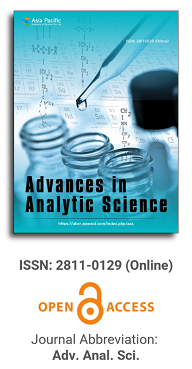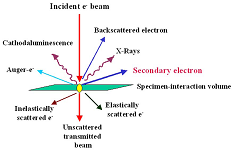
Asia Pacific Academy of Science Pte. Ltd. (APACSCI) specializes in international journal publishing. APACSCI adopts the open access publishing model and provides an important communication bridge for academic groups whose interest fields include engineering, technology, medicine, computer, mathematics, agriculture and forestry, and environment.

2024
Vol 5, No 2 (2024)
Scientific and technological progress is reshaping our world at an unprecedented rate, bringing opportunities and challenges to all walks of life. Scientific and technological innovation shows broad application prospects in fields such as environmental monitoring, biomedicine, energy development, materials science, and agriculture. Faced with challenges such as data quality, model complexity, environmental safety, and technical costs, future research should strengthen data integration and intelligent analysis, high-resolution detection technology, digitization and automation, and the application of green technology. At the same time, interdisciplinary cooperation is essential to promote scientific and technological innovation. Through continuous exploration and innovation, it is possible to meet global challenges and create a better future.
Vol 5, No 1 (2024)
This issue focuses on nanotechnology applications in drug detection and biosensing, especially high-performance liquid chromatography and electrochemical detection, improving the accuracy and efficiency of drug residue and heavy metal detection.
2023
Vol 4, No 2 (2023)
Chromatographic analysis techniques are essential for effective sample testing and quantification. This issue explores liquid and gas chromatography, enabling researchers to identify harmful substances and active components.
Vol 4, No 1 (2023)
The highlight of this issue is the development of an electrochemical DNA biosensor based on graphene oxide/gold nanoparticles, capable of simultaneously detecting E. coli and Salmonella DNA. This sensor integrates logic gate functionality, showcasing its potential applications in food safety.
2022
Vol 3, No 1 (2022)
Separation and detection technologies are core components of analytical science, aimed at qualitative and quantitative analysis of samples. They can isolate target components from complex mixtures and accurately measure their concentrations, supporting fields such as environmental monitoring, food safety, and pharmaceutical analysis.
2021
Vol 2, No 1 (2021)
Analytical chemistry is widely applied in forensic toxicology. This issue outlines key methods and techniques for detecting and quantifying toxins, drugs, and other evidence. By leveraging analytical chemistry principles, forensic experts can accurately identify and analyze evidence from crime scenes, aiding investigations and legal processes.
2020
Vol 1, No 1 (2020)
Medicinal plants and foods contain various inorganic elements, and chemical analysis in this issue helps detect their pharmacological effects and ensure food safety. Regional variations in inorganic element content due to environmental factors are crucial for maintaining the quality and safety of these products.
1.jpg)
Prof. Sivanesan Subramanian
Anna University, India





.jpg)
